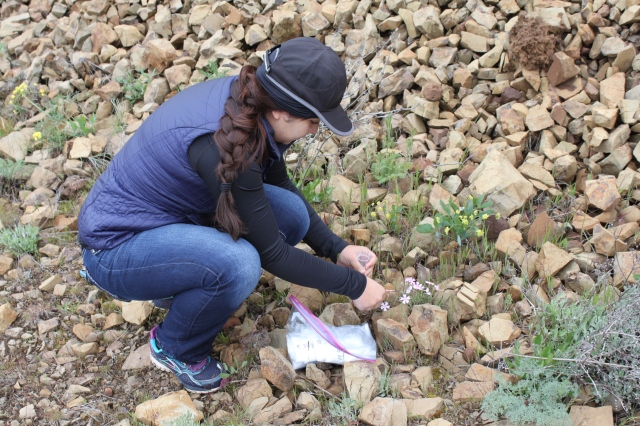Population genetics and the effects of polyploidy on diversity in the genus Phlox
Our present population genetic work in the wildflower genus Phlox focuses on P. speciosa, or showy phlox, which has a broad geographic range from the Sierra Nevada of California into British Columbia. Several subspecies and varieties were identified by previous taxonomists (originally Edgar Wherry in 1955), based on the obvious morphological and ecological variation in the group, but the current Flora of North America taxonomic treatment has suspended the recognition of subspecific taxa in P. speciosa pending extensive genetic and cytotypic investigation. We are exploring the genetic diversity and connectivity of 22 populations from across the range of this species, using flow cytometry for ploidy estimates and microsatellite markers for population genetics. Given the low cytotypic variation we have discovered in the species (only one tetraploid population), our current hypothesis is that the observed patterns of morphological and ecological differentiation between populations are due to genetic discontinuity associated with habitat, rather than ploidy level differences or phenotypic plasticity. This research will inform important evolutionary questions about species limits and subspecific variation in the species.
The pictures above show the range of morphological variation in P. speciosa: flower color, petal and leaf width and length, leaf pubescence, and habit all vary.
This research is an extension of a broader collaborative project on Phlox. With Dr. Carolyn Ferguson (Kansas State University), Dr. Shannon Fehlberg (Desert Botanical Garden), and Dr. Alan Prather (Michigan State University), we aim to understand the consequences of polyploidy in natural plant systems through an in-depth, multifaceted study of this recently radiated genus. Using cytotypic, phylogenetic, morphological, and ecological data for 15 species of western North American Phlox, we are addressing a variety of questions about the generation and maintenance of diversity in the group.





